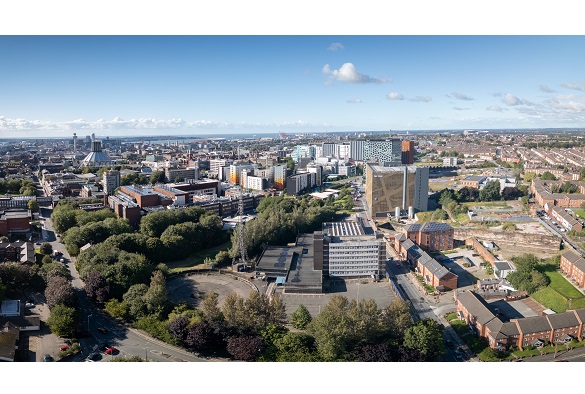
Staff and students at the University of Liverpool are being encouraged to take part in an online consultation which is being conducted by Liverpool City Council to better understand how green space around Grove Street is currently being used.
The consultation marks the start of community engagement to support the master planning for Paddington South – the next phase in the city’s flagship, mixed-use Knowledge Quarter Liverpool (KQ Liverpool) development, which is being delivered in partnership with the University of Liverpool.
Morgan Sindall Construction has been selected to undertake master planning and enabling works in preparation for future developments.
The works mark a new phase of wider development in Paddington Village that has already delivered several new facilities including the Spine Building, the Novotel Hotel, Liverpool International College, a 1,250 space multi-storey car park and a low carbon energy centre.
The online survey will run until Sunday, 13 October, and will be followed by a wider public consultation exercise on the plans for the site as the masterplan is developed.
Paddington South
Bounded by Grove Street, Smithdown Lane and Oxford Street, Paddington South is a plot of land jointly owned by the University and City Council; and the ambition will be to use it to accelerate the growth of the city’s research, development and innovation sector, whilst creating a vibrant new neighbourhood, embedded in sustainable development principles.
The City Council has already received a multi-million pound grant from Government to acquire some of the existing buildings, including the former Smithdown Lane Police Station, which is expected to be demolished in the first quarter of 2025.
Public green space
Central to the development will be a revamped 9-acre public green space around Grove Street, with the aim of improving biodiversity by 10% as part of the city’s wider Urban Green-up Programme.
Once complete, the new green space will be aligned with the Liverpool Public Realm, and Design for Access for All strategic planning documents and the Council and University’s net zero ambitions.